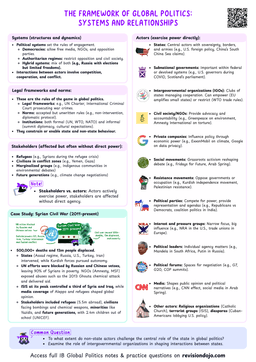Understanding Violations of Rights and Perceived Injustices
Violations of Rights
These occur when fundamental human rights are ignored, restricted, or abused. Examples include torture, arbitrary detention, and discrimination.
Perceived Injustices
These are situations where individuals or groups believe they have been treated unfairly, even if no formal rights have been violated. This can include economic inequality, political exclusion, or social discrimination.
- Understanding the difference between violations of rights and perceived injustices is crucial.
- While the former involves clear breaches of legal or moral standards, the latter is often subjective and shaped by cultural, social, and political contexts.

Types of Responses to Violations and Injustices
- Legal and Institutional Responses
- National Courts and Legal Systems: These are often the first line of defense against rights violations. They can: - Prosecute perpetrators of human rights abuses. - Provide remedies for victims, such as compensation or restitution.
- International Courts and Tribunals: These include the International Criminal Court (ICC) and regional human rights courts like the European Court of Human Rights (ECHR). They: - Prosecute individuals for crimes like genocide, war crimes, and crimes against humanity. - Hold states accountable for systemic rights violations.
- Political and Diplomatic Responses
- Sanctions and Diplomatic Pressure: States and international organizations may impose sanctions or use diplomatic channels to pressure governments to change their behavior.
- Humanitarian Interventions: In extreme cases, military interventions may be justified to prevent mass atrocities, though these are highly controversial and often debated.
- Social and Grassroots Responses
- Protests and Social Movements: Grassroots movements play a crucial role in raising awareness and demanding change. Examples include the Black Lives Matter movement and the Arab Spring uprisings.
- Advocacy and Awareness Campaigns: NGOs and civil society organizations often lead campaigns to highlight injustices and mobilize public support.
- Economic Responses
- Boycotts and Divestment: Consumers and investors may boycott products or divest from companies or countries involved in rights violations.
- Aid Conditionality: Donor countries may tie economic aid to improvements in human rights or governance.
- The 2015 Paris Climate Agreement illustrates the concept of collective action in global governance.
- Despite representing a significant diplomatic achievement with 196 signatories, its non-binding nature demonstrates the tension between state sovereignty and global cooperation on transnational issues.
Real-World Examples of Rights Violations
| Violation | Explanation | Why It’s Concerning |
|---|---|---|
| Child Soldiers | Use of minors under 18 in armed conflict, e.g., as fighters or informants. | Denies education and safety; leads to lasting trauma and reintegration challenges. |
| Human Trafficking | Forcing or deceiving people into labour or sexual exploitation. | Exploits the vulnerable; results in physical, emotional, and long-term psychological harm. |
| Forced Labour | Coerced work under threat, common among undocumented migrants. | A form of modern slavery; victims fear reporting due to legal or physical consequences. |
| Forced Labour | Displacement due to conflict, disaster or persecution, e.g., Rohingya crisis. | Causes instability, trauma, and long-term insecurity for affected populations. |
| Prisoner of War Abuse | Denial of Geneva Convention protections, e.g., torture of detainees. | Undermines humanitarian law and peace efforts. |
| Censorship | Suppression of media or protest, e.g., journalists jailed in authoritarian states. | Undermines humanitarian law and peace efforts. |
| Counterterrorism Abuses | Suppression of media or protest, e.g., journalists jailed in authoritarian states. | Can lead to racial profiling, unjust detentions, and loss of civil rights. |
| Gender Discrimination | Unequal rights or violence based on gender identity or sex, e.g., femicide in Mexico. | Can lead to racial profiling, unjust detentions, and loss of civil rights. |
- When evaluating rights violations in an exam, always link the violation to a specific human rights document or principle (e.g. UDHR, CRC, ICCPR).
- This shows a deeper understanding of why the issue matters globally and how it could be addressed.
Case Studies: Responses in Action
Case studyThe Rohingya Crisis in Myanmar
- Background:
- The Rohingya, a Muslim minority group in Myanmar, have faced decades of persecution, culminating in a military crackdown in 2017 that the UN described as a "textbook example of ethnic cleansing."
- Responses:
- Legal and Institutional:
- The International Court of Justice (ICJ) is hearing a case brought by The Gambia, accusing Myanmar of genocide.
- The ICC is investigating crimes against the Rohingya.
- Political and Diplomatic:
- The US and EU imposed targeted sanctions on Myanmar's military leaders.
- ASEAN faced criticism for its limited response, highlighting the tension between non-interference and human rights.
- Social and Grassroots:
- NGOs and activists have raised awareness through campaigns and reports.
- Rohingya refugees have shared their stories, mobilizing international support.
- Legal and Institutional:

- While many associate the concept of sovereignty primarily with the 1648 Peace of Westphalia, its meaning and application have evolved significantly over time
- Particularly with the rise of international human rights norms and the Responsibility to Protect (R2P) doctrine in the late 20th and early 21st centuries.
The Black Lives Matter Movement
- Background:
- Sparked by the killing of George Floyd in 2020, the Black Lives Matter (BLM) movement highlights systemic racism and police brutality in the United States and beyond.
- Responses:
- Legal and Institutional: Some US cities implemented police reforms, such as banning chokeholds and increasing accountability.
- Social and Grassroots:
- BLM organized mass protests globally, raising awareness and pressuring governments to act.
- The movement used social media to amplify voices and mobilize support.
- Economic:
- Companies pledged to address racial inequality, both internally and through community investments.

- When analyzing responses to rights violations, consider the effectiveness and limitations of each approach.
- For example, legal actions may provide justice for victims, but they can be slow and face challenges in enforcement.
Challenges and Limitations of Responses
- Sovereignty and Non-Interference


